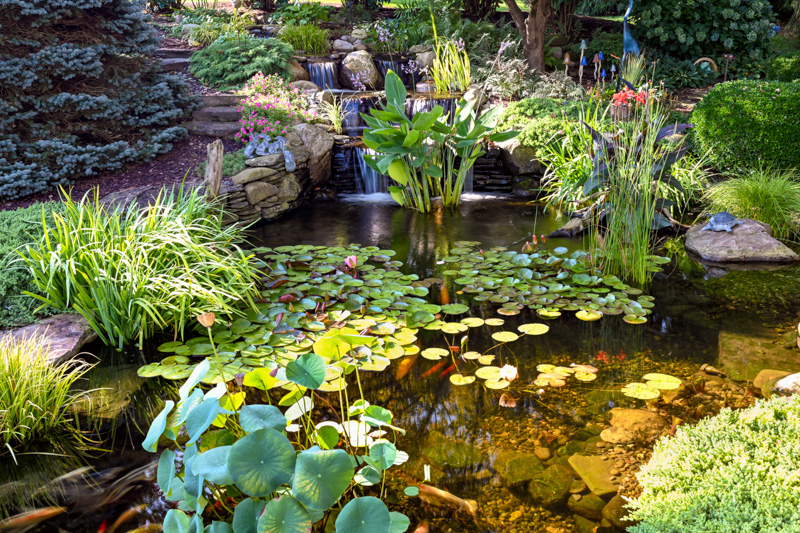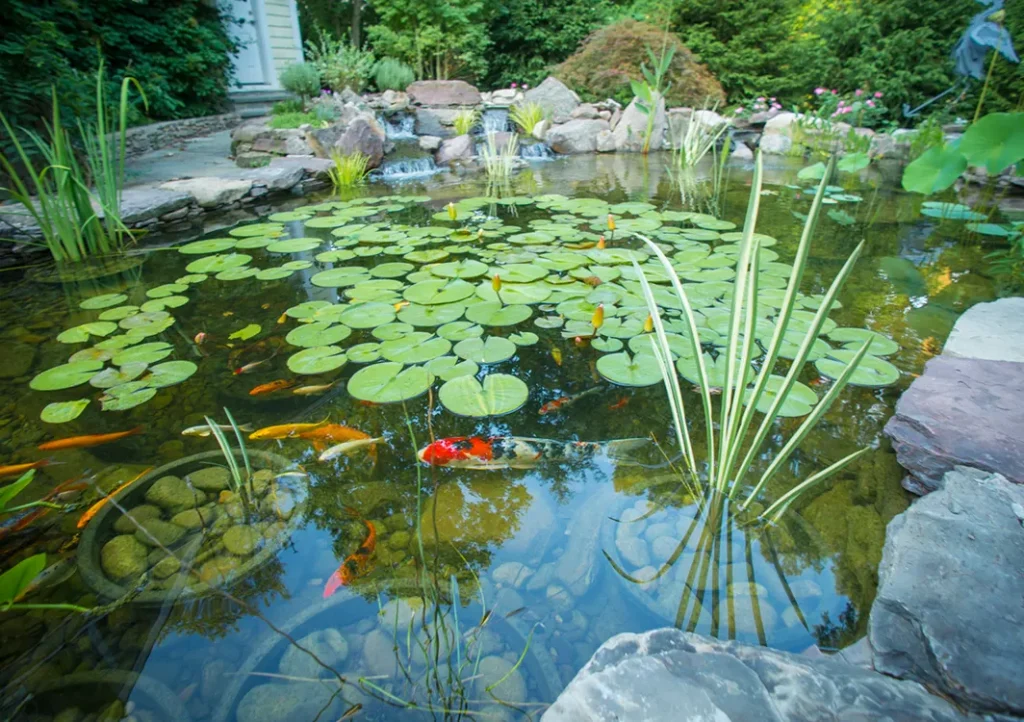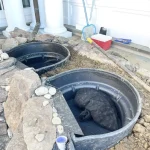Welcome to our comprehensive guide on how to maintain a clear and healthy koi pond. Koi ponds are not only beautiful additions to any backyard, but they also require proper care to ensure the health and well-being of the koi fish. Keeping your koi pond clear is essential for maintaining a thriving ecosystem and ensuring the longevity of your fish. In this article, we will provide you with valuable tips and tricks to help you achieve crystal-clear water in your koi pond.
1. Proper Filtration System
One of the most important aspects of maintaining a clear koi pond is investing in a high-quality filtration system. A good filtration system will help remove debris, waste, and other pollutants from the water, keeping it clean and clear. There are three main types of filtration systems for koi ponds: mechanical, biological, and chemical. Mechanical filters remove solid waste, biological filters break down harmful substances, and chemical filters remove impurities from the water.

Credit: m.youtube.com
2. Regular Water Testing
Regular water testing is crucial for monitoring the water quality in your koi pond. Testing the water for pH levels, ammonia, nitrites, and nitrates will help you identify any imbalances or issues that could be affecting the clarity of the water. By maintaining proper water parameters, you can prevent algae blooms and other water quality problems that can make your pond appear cloudy.
3. Adequate Aeration
Adequate aeration is essential for promoting oxygen levels in your koi pond. Oxygen plays a vital role in maintaining water clarity and supporting the health of your koi fish. Installing aeration devices such as air stones, aerators, or waterfalls can help oxygenate the water and prevent stagnation, which can lead to cloudy water and algae growth.
4. Regular Water Changes
Performing regular water changes is another key factor in keeping your koi pond clear. By replacing a portion of the water on a weekly basis, you can remove excess nutrients, waste, and pollutants that can contribute to cloudy water. Aim to change 10-20% of the water every week to maintain optimal water quality and clarity.
5. Proper Feeding Practices
Overfeeding your koi fish can lead to excess waste and uneaten food accumulating in the pond, which can degrade water quality and contribute to cloudiness. Follow a feeding schedule and only provide your fish with the amount of food they can consume in a few minutes. This will help prevent overfeeding and reduce the buildup of organic matter in the pond.
6. Shade and Shelter
Providing shade and shelter in your koi pond can help prevent excessive sunlight exposure, which can promote algae growth and make the water appear green and murky. Adding aquatic plants, floating plants, or installing a shade sail can help create shaded areas in the pond, protecting the water from direct sunlight and maintaining water clarity.
7. Regular Pond Maintenance
Regular maintenance tasks such as skimming debris, cleaning filters, and removing decaying plant matter are essential for keeping your koi pond clear. Establish a maintenance routine and schedule to ensure that these tasks are performed consistently. By staying on top of pond maintenance, you can prevent issues that can affect water clarity and the overall health of your koi fish.
8. Beneficial Bacteria
Introducing beneficial bacteria into your koi pond can help break down organic waste, excess nutrients, and harmful substances that can cloud the water. Beneficial bacteria products are available in liquid or granular form and can be added to the pond regularly to maintain a healthy biological balance. These bacteria work to improve water quality and clarity by reducing algae and eliminating odors.
9. Avoid Chemical Treatments
Avoid using chemical treatments or algaecides to clear your koi pond, as these products can harm the delicate ecosystem of the pond and endanger the health of your koi fish. Chemical treatments can disrupt the natural balance of the pond and may have adverse effects on water quality and the overall well-being of your fish. Opt for natural solutions and sustainable practices to maintain a clear and healthy pond environment.

Credit: splashsupplyco.com
10. Monitor Fish Population
Keep an eye on the fish population in your koi pond and ensure that it is not overcrowded. Overcrowding can lead to excess waste production, increased nutrient levels, and poor water quality, all of which can contribute to cloudy water. Maintain a balanced fish population to prevent stress on the ecosystem and maintain clear water in your koi pond.
Conclusion
By following these tips and tricks for maintaining a clear koi pond, you can create a beautiful and healthy environment for your koi fish to thrive. Proper filtration, regular water testing, adequate aeration, and other maintenance practices are essential for ensuring the clarity and quality of the water in your pond. Remember to monitor water parameters, perform regular maintenance tasks, and avoid harmful chemicals to promote a vibrant and clear koi pond that you can enjoy for years to come.




